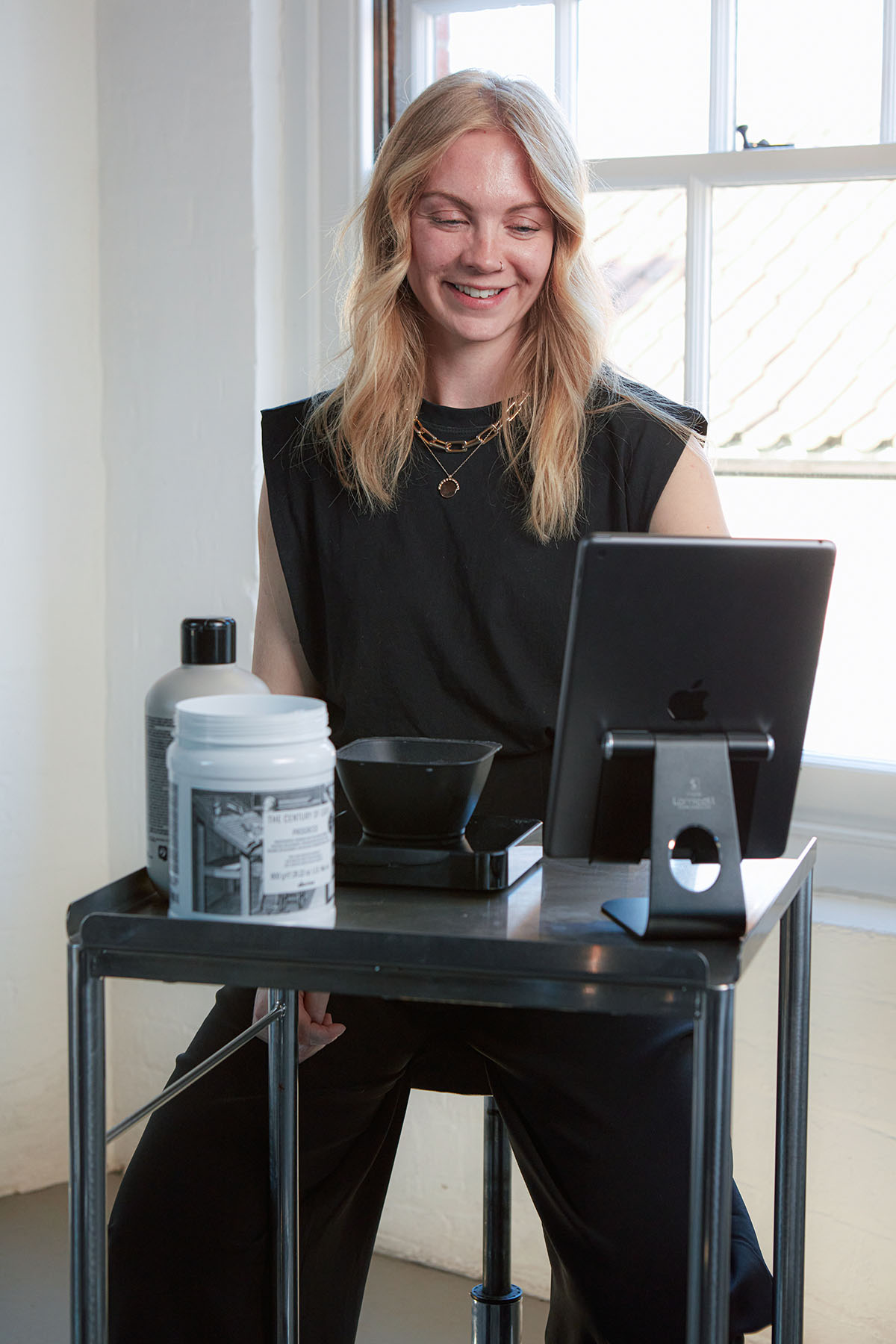2022 Year in Review
Data collected by Vish shows that 2022 was the year of highlights, coming in as the top service performed by colourists and stylists across the nation. Used by stylists all over the world, from those in huge multi-location, medium and small salons to those working independently, Vish has made it easier to control costs, nudge pricing towards greater profitability and lessen the industry’s impact on the environment. But don’t just take it from us; listen to what our clients have said.
A new way to price services
Some time ago Emma Jarvis, owner of the Hair Base in Gorleston-on-Sea, Norfolk, noticed a pattern emerge from her POS that looked bleak; costs were rising inexorably while revenue flat-lined. Looking to the future, she knew her business was unsustainable.
“I want to move out of man-managing the salon every minute it’s open, but I need to be sure it is profitable when I’m not there,” says Emma, who has a team of 10, including seven stylists. “So I decided to transform the way we charged for services. Like a mechanic who charges for labour and parts, I introduced a structure where we charged by the stylist-minute, with the product on top.”
Almost from the day Vish went live she saw revenue increase. One month captured £760 in additional charges, and it has since averaged out at around £400 in extra product charges. “Previously, I was losing money on those services,” she adds.
Cut out commission paid on salon costs
Joshua Proud, co-owner of Proud Salon in Inverurie with his wife Kareen, also transformed charging to a time-based approach, paying a commission on the labour, not the colour. The restructuring took a couple of days with his Vish educator on hand, converting to hourly rates for the stylists and separating out all product costs, to be itemised as extras. Stylists have been given more time to deliver services but all product costs are stripped out of the commission system.
“When Tom, (managing director at Vish) touched on separating out the product it was a lightbulb moment for us,” says Joshua. “No one can expect to be paid commission on what is a cost to the business.”
Capturing missed services
Over the past 12 months, more and more salons have luxuriated in an immediate revenue increase of 15% due to all those often missed items like toners and conditioning treatments being captured in Vish and communicated to reception. At Mayfair & Grace in Tetbury, the menu is based on how long each service will take the stylists, with additional colour or extra treatments added on top.
“Having the Vish Front Desk app live on our POS screen with the automatic link between the two makes things so much easier, says owner Patsy Robertson, who despite having a salon spread across four storeys has full oversight of her business through technology. “Every colour mixed, every treatment given is captured in Vish and communicated to Phorest,” she says.
Injecting greater flexibility and profitability
Redken artist Jo Blend, whose salon is in Derby, restructured her prices in 2022 to inject a secure level of profit into every service. Each colour service has a product allowance, with any additional colour dispensed automatically captured by Vish and charged to the client. In a salon where half the team is renting chairs, Vish has made it easy to keep an account of all colour used, enabling Jo to easily manage employed alongside those who are self-employed.
“Having an electronic record makes it totally transparent and easy to pass the cost of the colour allowance allotted in the service and any extra on to the stylist,” explains Jo. “It means we can all use the same colour line supplied by the salon, which ensures greater consistency across services. The stylist doesn’t need her own colour stock, making it easy for them as well as us. If I didn’t have Vish to monitor colour use, everyone would have to buy their own colour and it would take up so much more space.”
Colour transparency drives behavioural change
Vish was born from a desire to cut back on waste, helping protect the salon business as well as the planet. We quickly found letting a salon team see exactly how much they wasted in Vish had a direct impact on behaviour. At Karine Jackson’s London salon, which is a sustainable business, waste was already much lower than average. But still, Karine was able to see how even smaller quantities quickly added up, eating away at profitability. When Vish brought her waste down, her colour bill decreased by 20%.
Meanwhile, when the team at Jo Blend’s salon could see what they wasted and how it pushed up prices for clients, waste immediately went down. The salon is no longer paying for colour that was thrown away unused and Jo’s colour costs have dropped by £8k.
Simplifying stock control
Oversight of colour stock is a managerial nightmare that involves counting tubes, tops or box ends and then, inevitably, restocking a regular spread of colours regardless. But not with Vish. “It’s enabled us to monitor and track colour usage in a way that simply wasn’t possible before,” says Toby Dicker, owner of The Chapel salon group. “Vish measures and automatically records all colour dispensed down to the tenth of a gram, allowing us to see how much is measured out by our stylists, which makes reordering easy. No more colours gathering dust on our shelves. We keep it lean and clean, saving ourselves space, improving cash flow, and eliminating aging colour sitting unseen on our colour bars.”
As we approach 2023, Vish’s mission is to help even more salons achieve greater profitability, lower costs, and eliminate waste.
